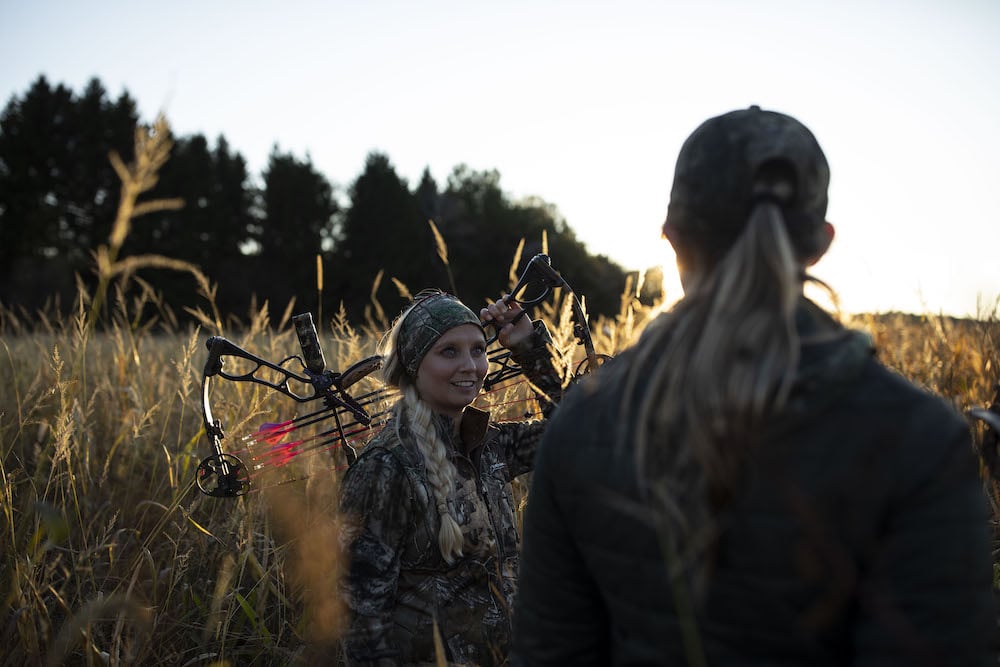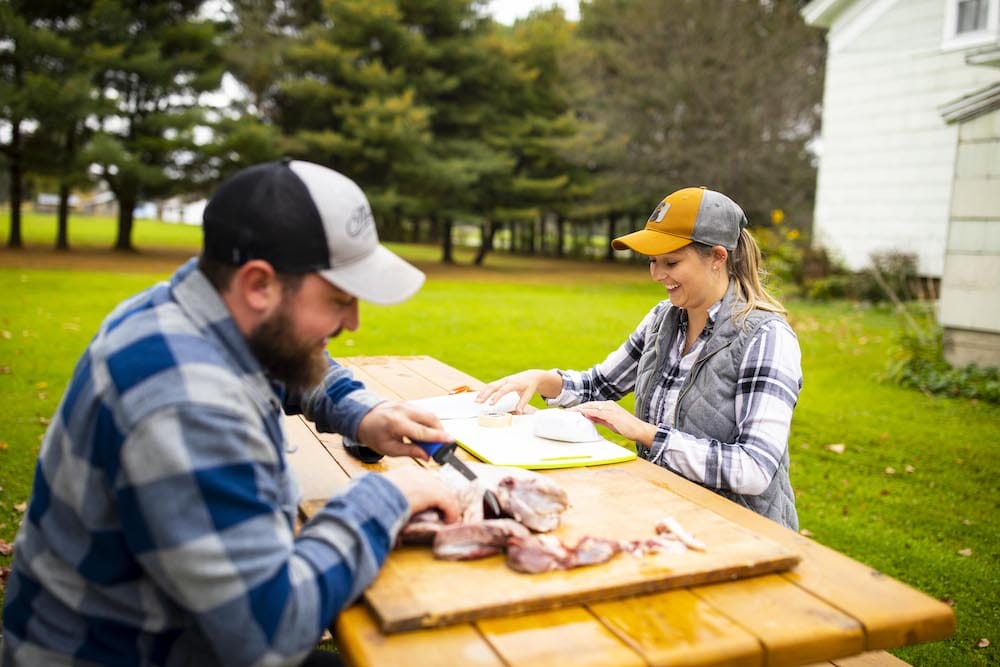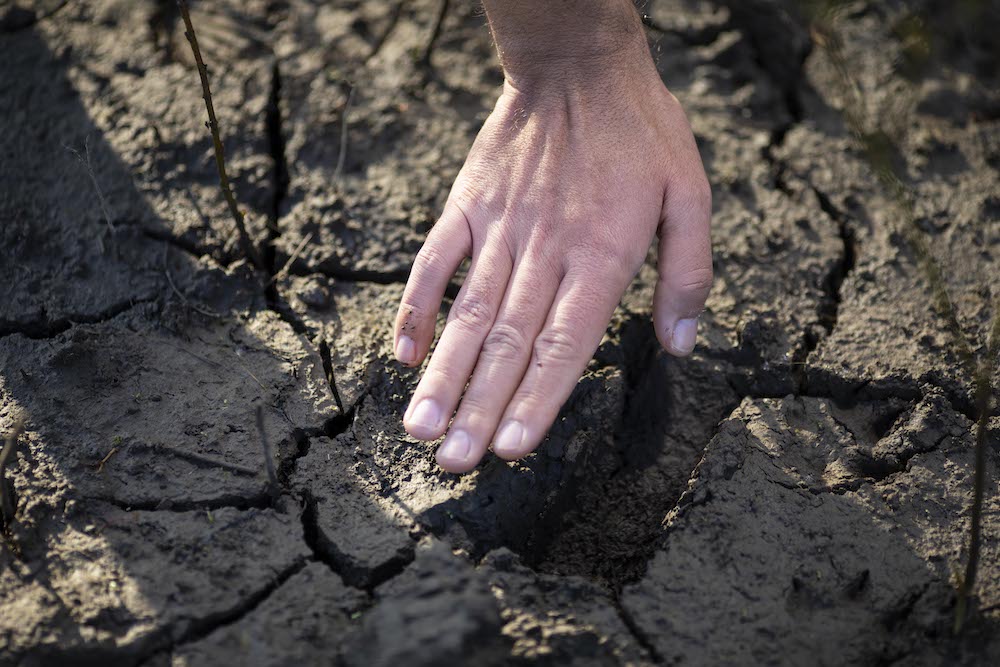People love telling and listening to stories. Why not share a story about bowhunting with someone who’s new to the sport? It could be a start-to-finish tale of adventure or a short glimpse into your life as a hunter. It could be the story of how you started bowhunting, a memory from one of your favorite hunts, or an encounter with a wild animal on a recent trip to the woods. Whatever you choose to share, know that stories have the power to shape how someone views bowhunting.
There’s a lot of good that can come from a conversation about bowhunting. Research shows that it takes a hunter to make a hunter. Stories can inspire others to try bowhunting or help them learn what to do — or not do — on a bowhunting adventure. As the storyteller, you might also reaffirm your bowhunting values or enjoy reliving a hunting memory.
However, not all bowhunting stories have a happy ending. You might recall wounding an animal or getting lost in the woods. While these stories are real and unfortunate, sharing them with the wrong person at the wrong time can turn someone off to bowhunting altogether. Stories have the power to change hearts and minds (for better or worse), so you must be mindful of your storytelling approach, language and intention.
Use these tips to help convey your story tastefully and respectfully.

Make sure to mention bowhunting’s many benefits. Photo Credit: ATA
1. Focus on Hunting’s Benefits
Often, when a newcomer hears about bowhunting, they get stuck on the kill and overlook the big-picture impacts of hunting that are extremely beneficial for the environment and personal well-being. Share the entire story, not just a piece of it. Hunting is a process, and each step is important to the result. It takes skill and patience and requires practice, scouting, and knowledge of game animals and their habitat. Don’t just talk about killing the animal. Show them the entire process and explain that hunters fund conservation and habitat management efforts by buying licenses and equipment.
Provide context and share the benefits of hunting, including that the activity provides a food source, is a wildlife management tool to control and sustains healthy wildlife populations, and improves nationwide conservation efforts that provide good habitat for game and nongame species. Hunters also practice fair chase principles. If any of these reasons are your motivation for hunting, try to weave them into your story to show how helpful and practical hunting is for individuals, wildlife and the natural environment. The more positive things you can bring to light about hunters, the better.
2. Make the Food Connection
To expand on the topic of sustainable meat, explain that bowhunting is a great alternative to purchasing meat at the grocery store because wild game meat is harvested ethically and sustainably. Plus, the animals live a wild, free life. Make the food connection and share that each animal you shoot provides meals for your family or families in need, if you donate the meat. People want to know how to turn game meat into tasty food. Venison, or meat obtained from elk or deer, is lean, low in fat and cholesterol, and high in vitamins B6 and B12 and omega-3 fatty acids. People can easily substitute it for store-bought beef in tacos, chili and spaghetti recipes. Share venison’s flavorful versatility and health benefits with your audience.
3. Consider Your Audience
A person’s age, race, gender or background can influence their attitude toward hunting. Family and cultural traditions also affect a person’s relationship with food and animals. That means certain hunting concepts will resonate differently with different people. Before you start a long-winded spiel about hunting, gather intel from your audience or the person you’re talking to. Understanding their feelings toward animals or hunting might help you pick a story that’s better suited to their interests or level of familiarity with bowhunting.
Adjust your message and delivery depending on the person. For example, if someone has only heard about bowhunting but doesn’t know anyone who does it, it’s probably best to talk about why you bowhunt instead of the time you accidentally shot a deer in the guts. However, if someone just started bowhunting and is concerned about wounding animals, you could share the story about making a bad shot and what you did to ensure it doesn’t happen again. Additionally, the details of a story told to a 5-year-old should probably be different from what’s shared with a 50-year-old. Always remember whom you’re talking to because each person will react differently.
4. Consider the Approval Rates Among Americans

Consider the type of game in your hunting story and whether that wild game has a high approval rating. Photo Credit: ATA
Approval rates for hunting vary significantly based on how someone hunts and the species they hunt. For example, a 2019 National Shooting Sports Foundation study conducted by Responsive Management found 80% of Americans approve of hunting with a bow and arrow, while 55% approve of hunting with dogs, 32% approve of hunting over bait, and 21% approve of hunting on a property with a high fence around it. The same study analyzed approval rates by species. The approval rate for hunting deer was 78%, wild turkey 78%, duck 74%, rabbit 72%, elk 66%, squirrel 65%, black bear 44%, wolf 39%, and mountain lion or cougar 38%. Knowing how the American public feels about how someone hunts and what they hunt is important when trying to win over a newcomer. To make a connection with someone, pick stories that align with the interests and approval of most Americans.
5. Choose Your Words Carefully

Share how bowhunters scout, practice and hone their craft outside of hunting trips. Photo Credit: ATA
As people listen to your story, they’re likely judging what you say. Choose words that show you respect wildlife and appreciate the opportunity to hunt. Specific words can influence how people think about hunting in minor but crucial ways. The “How to Talk About Hunting” book by Mark Damian Duda and the NRA Hunters’ Leadership Forum compares studies using similar but different terms. In the first study, 61% of respondents expressed approval of “regulated hunting” compared with 79% who expressed approval of “legal hunting.” When the terms were combined into “legal, regulated hunting” in a third survey, 88% of respondents expressed approval for the activity. In other words, saying “legal, regulated hunting” is the best way to describe how you hunt because it lets nonhunters know that hunting is controlled, is regulated and helps lead to healthy wildlife populations.
Additionally, if you’re talking about the food-related benefits of hunting, the book finds terms like “healthy,” “organic,” “all-natural” and “free-range” to be particularly effective. Mentioning that you trophy hunt might turn people off to your story, but mainly because trophy hunting is misunderstood. Many people believe trophy hunters only take the antlers from the animals they kill and waste the meat, when in reality, wasting meat is illegal. Nonhunters aren’t familiar with the process and language of hunters, so choosing words carefully and explaining what they mean is crucial.
6. Explain the Difference Between Legal Hunters (Most People) and Poachers
The vast majority of hunters hunt legally and ethically, and they strive to make humane kills. Those who hunt or fish illegally are called poachers. Poachers give the hunting community a bad rap, so we must share our true values and purpose and debunk myths about heartless hunters. In your story or conversation, try to explain that all states have hunting regulations, which hunters must know, understand and abide by when they’re participating in recreational activities. Ethical hunters do their best to ensure that animals do not unduly suffer. In fact, a lethal shot from a hunter often produces a much quicker death than starvation, disease, vehicle collisions and predator attacks. Although poachers are the minority, real hunters must communicate the stark differences between the two groups.
You must do your part to create a positive public image of bowhunters. That starts by sharing your story in a way that empowers and inspires others. Over time, you might get a nonhunter to convert to a hunter, and that’s the goal!